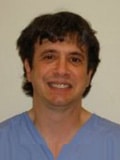
Olney Laser & Aesthetic Dental Center
18109 Prince Philip Drive
270
Olney, MD 20832

More Mental Health Articles
Dental Lasers
Dental procedures can be performed quicker, more effectively and more comfortably thanks to the growing popularity of laser dentistry. Laser (Light Amplification by Stimulated Emission of Radiation) technology has been used in various types of medical procedures for years. It is a natural progression for dental offices to follow as dental laser technology continues to improve and patients begin to demand more services from this exciting field. Eventually, dental lasers could make it possible for dentists to access any part of any tooth, thereby totally replacing the need for the traditional dental drill. This may help to relieve the fear and anxiety many people experience when they go to the dentist.
Types of Dental Lasers
The Food and Drug Administration (FDA) has approved of a variety of hard and soft tissue lasers for use in the dental treatment of adults and children. Because dental lasers have unique absorption characteristics, they are used to perform specific dental procedures.
Hard Tissue Lasers Hard tissue lasers have a wavelength that is highly absorbable by hydroxyapatite (calcium phosphate salt found in bone and teeth) and water, making them more effective for gently cutting through natural tooth structure.
The primary use of hard tissue lasers is to cut into bone and teeth with extreme precision. Hard tissue lasers are often used in the “prepping” or “shaping” of teeth for composite bonding, the removal of tooth decay and the repair of certain worn down dental fillings.
Soft Tissue Lasers Soft tissue lasers represent wavelengths that are highly absorbable by water and hemoglobin (oxygenating protein in red blood cells), making them more effective for soft tissue management. Commonly used soft tissue lasers include CO2 (carbon dioxide) and diode lasers, which may be used as a part of periodontal treatment and have the ability to kill bacteria and activate the re-growth of tissues. The carbon-dioxide laser minimizes damage to surrounding tissue and removes tissue faster than the diode laser.
Soft tissue lasers penetrate soft tissue while sealing blood vessels and nerve endings. This is the primary reason why many people experience virtually no postoperative pain following the use of a laser. Also, soft tissue lasers allow tissues to heal faster. It is for this reason that a growing number of cosmetic dental practices are incorporating the use of soft tissue lasers for gingival sculpting procedures.
Diagnostic Lasers The iTeroTM system is a technology that uses a laser-based wand that scans a patients prepared tooth and takes an extremely accurate optic impression for crown and bridge cases. The iTero scan replaces the gagging, gooky impression materials that most patients find very distasteful. Lasers provide energy and specific proteins that help move messages between cells to match the bodys natural ability to use light spectrums to heal damaged cells. Some dental laser technology has been developed that can be used to generate both hard and soft tissue laser energy, depending upon the patients needs.
Other Articles You May Find of Interest...
- Embracing Healing: Navigating the Emotional and Physical Journey of Mastectomy Recovery
- Understanding the Role of Support Groups in Personal Development
- Ways To Check On a ‘Mama’ In Your Life
- How to get rid of stress
- The Impact Of Mental Illness
- Healthy Mind In a Healthy Body
- 10 Summer Bucket List Ideas For 2024

















